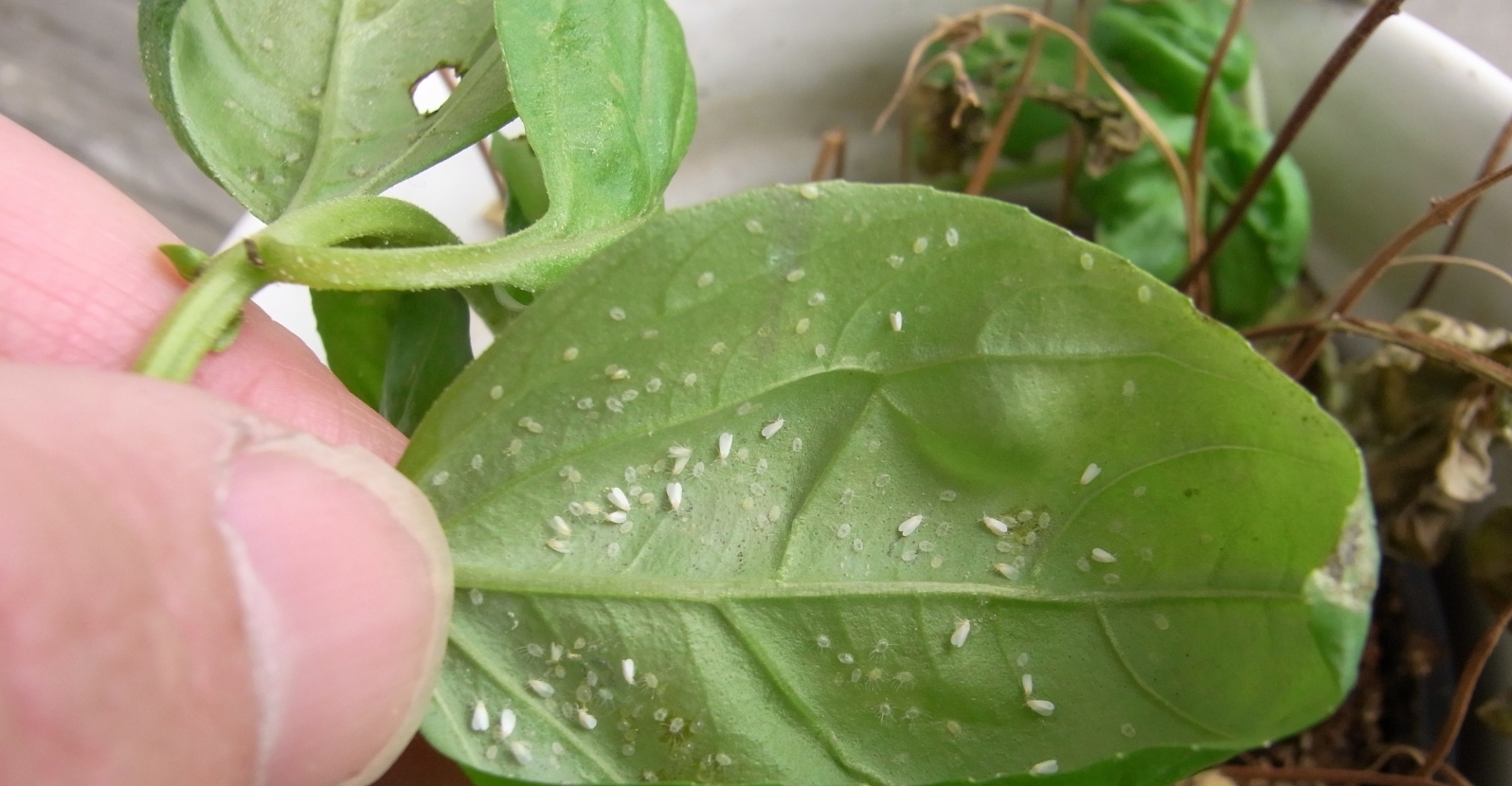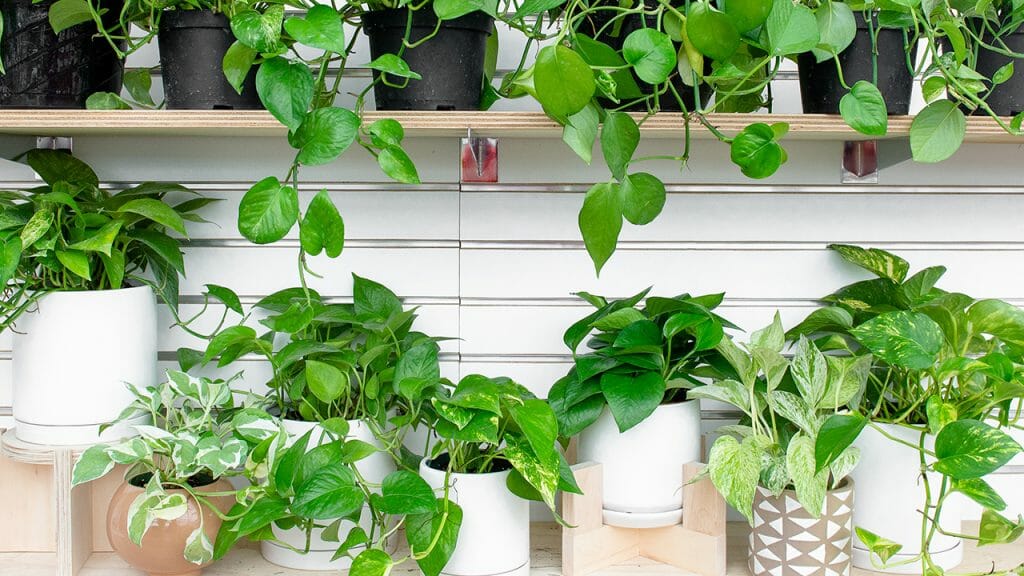Indoor plants instantly bring life and beauty into your home, but the last thing you need with your new plant is a bug infestation. If left untreated, you could have a major infestation on your hands before you know it. If you’ve recently brought a new houseplant into your house and have now noticed more bugs than usual, you may be wondering if your houseplant is what attracted them.
So, do houseplants attract bugs into your house? Well, no. Bugs aren’t attracted to the houseplants themselves, but rather the living conditions where most indoor plants thrive. So if you’ve got a lot of houseplants, chances are your hope is the right environment for insects. However, there are steps you can take to prevent bug infestations as your plant collection grows.
In this article, we’ll discuss what conditions attract bugs into your home, what kinds of bugs you might see, how to tell if your plants are infested, and what to do about it if you discover signs of bugs on your plants. Read on to learn more!
What Kinds of Bugs Might You See Near Your Plants?
If you have a large variety of plants in your home or plant to add to your collection, you might eventually find yourself dealing with one or more of these more common insects:
- Aphids – Aphids are small insects with translucent, oval-shaped bodies. They need to be dealt with as soon as possible because they secrete a substance that attracts other insects and pests.
- Fungus gnats – Fungus gnats are grey-ish black in color with transparent wings. They feed on the organic material in potting soil rather than the plants themselves but they may also chew away at your plant’s roots, we’ve got 7 tips to get rid of fungus gnats here.
- Spider mites – Usually very pale or reddish-brown, spider mites are incredibly tiny and resemble spiders. They live on the undersides of leaves and reproduce rapidly, so an infestation can quickly get out of hand.
- Mealybugs – Oval in shape and waxy-white in color, mealybug clusters resemble a cotton-like substance on your plant’s leaves. They reproduce quickly and will spread to other plants if you aren’t proactive in treating them.
- Scales – Scale is parasites that attach themselves to the host plant and slowly feed off of them over time. They resemble round or oval-shaped bumps on the stems and leaves.
- Whiteflies – White in color with large round wings, whiteflies resemble tiny white hearts. They congregate on the undersides of leaves and feed on the sap and juice of the host plant.
What Environmental Conditions Attract Bugs?
It’s a misconception that bugs are attracted to houseplants themselves. Many common insects that you find on plants are actually attracted to humidity and moisture. If your plant has these conditions, then they’ll attract bugs that will then use your plants for shelter, breeding, and food.
First, consider where you live. If your home is in a place with a wet climate, like a coastal area or someplace with a lot of precipitation, be aware that you will have a larger chance of insects than if you live in a dryer climate.
If you have lots of tropical plants, you’ll want to keep them properly hydrated. But on the flip side, you need to make sure you don’t overdo it because any excess moisture is likely to become a breeding ground for insects.
Also, lack of proper air circulation can lead to moisture buildup and create the right environments for bugs to reproduce and thrive. If you find air circulation is a problem, place your plants near a window, or even a ceiling fan.
Symptoms That Your Plants Are Infested
Sometimes you may not realize that you have bugs in your plants until it’s too late and they’ve already begun to reproduce. But there are a few things you should look for so that you can spot signs of pests as soon as possible and identify which insect is causing the issue.
Apart from seeing actual colonies of insects on your plant, you can also look at how your plant is growing (or not growing) to determine the root of the issue. Learn how to spot signs of common pest infestations with this chart below:
| Insect | Symptom of Infestation |
| Aphids | Leaves may be twisted, curled, or wilted, and will likely yellow or die prematurely. Aphids leave behind a sugary residue called honeydew. |
| Fungus gnats | Fungus gnats may feed off your plant’s roots, causing leaf loss, yellowing, poor growth, and yellowing. |
| Spider mites | Leaves may have tiny white or yellow spots. Heavy clusters of mites will resemble bronze-colored stains on your plant. |
| Mealybugs | Leaves will yellow and shed, plant growth will be stunted. Like aphids, mealybugs secrete honeydew. |
| Scale | Brown pockmarks on leaves, possible leaf shedding, and yellowing |
| Whiteflies | Plants may yellow, shrivel and shed leaves. A heavy whitefly infestation will often lead to plant death. |
How To Avoid Attracting Bugs Into Your House
- Inspect any new houseplants for signs of pest damage. This method isn’t 100% foolproof, since insects like fungus gnats can also hide in the soil where you might not see. Check underneath the leaves for any eggs or fully grown insects, and make sure that the leaves haven’t been chewed away. If you spot symptoms of pest damage, it’s likely not worth bringing the plant into your home where your other plants can be affected.
- Ensure your plants have proper drainage and avoid overwatering. Don’t worry about watering on a schedule, since you run the risk of overdoing it. Just wait until the soil is dry or your plants show mild signs of thirst, like slightly wilting leaves. Then water your plants until water drains from the bottom of your planter into the dish below.
- Seal up your home at all the entry points. If you can keep bugs from entering your home, then you’re less likely to have an infestation later.
- Maintain proper air circulation with screened windows and fans. You don’t have to go overboard, but the gentle movement of air is crucial to keeping bugs from congregating.
What To Do If You Have An Infestation
If you find that one or more of your houseplants is infested with any of the insects on this list, don’t panic. You may still be able to save your plant if you can manage to stop the spread of the insects and eradicate them before they can reproduce.
There are certain steps you should take the second you notice any symptoms of an infestation, whether you see large colonies of insects or not.
- Isolate the infested plant(s) from the rest of your plants to reduce the spread.
- Spray the insects off with water or wipe them off with a damp rag or cotton swab.
- Spray your plants with insecticidal soap to help kill any remaining insects. You may have to repeat this process a few times as eggs hatch in order to kill the infestation off completely.
- If all else fails, call an expert. If the infestation has grown beyond your control, your best move is to bring in an exterminator who’s trained to deal with the insects and rid your home once and for all.
Frequently Asked Questions:
Is it normal for healthy plants to attract bugs?
It’s definitely possible that insects might flock to your healthy plants, especially if those plants are tropical and thrive in a hot and humid environment. If you notice insects on your plant, that doesn’t necessarily mean the plant itself is unhealthy, although if left untreated for too long it’s likely your plant will suffer or die.
Are there any plants that repel bugs?
There are actually lots of plants, especially herbs, that keep insects at bay. If you grow them alongside your other houseplants, you may be able to help prevent an infestation before it starts. Choose plants like mint, basil, rosemary, sage, lavender, and catnip. You could also consider getting a carnivorous plant, like a Venus flytrap, to help you keep bugs under control.
Conclusion
No one wants bugs in their home, and you shouldn’t have to sacrifice having beautiful, healthy plants in your home to keep them away. But if you’re careful to monitor the environment that your plants are in, you’ll be able to notice insects quickly before they reproduce and grow out of your control. All you need to do is be observant and aware.





